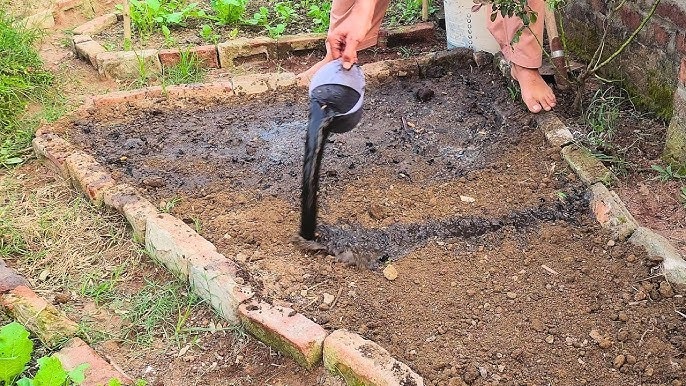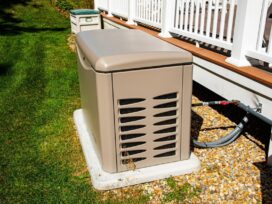
How to Enhance Poor Soil in Your Garden
When soil conditions are less than ideal, even the most determined plants can struggle to survive.
If your garden bed feels more like concrete than loose dirt, the roots will have a hard time getting the nutrients, water, and air they need. As a result, your greenery will end up looking sad and droopy.
It’s not the end of the world, though. Improving your soil is much easier than you might think. With these simple, budget-friendly tips, you can turn a lifeless plot into a healthy home for your green companions.
Assess the Soil’s Condition
If your garden looks worse for wear despite your efforts, you need to check what’s going on beneath the surface. Much like a house needs solid foundations to remain structurally sound, plants need good soil to thrive throughout the changing seasons.
Assessing its structure, drainage, texture, and acidity levels will highlight any deficiencies or imbalances that may be hindering their development.
Get those factors in check, and you’ll have a thriving, low-maintenance wonderland.
Drainage Levels
Start by observing how your plot behaves after heavy rain. If water lingers in puddles long after it stops, this could be a sign of poor drainage.
In this case, aerating the ground with a garden fork or specialised tool will help relieve compaction. In return, this allows air, water, and nutrients to flow more freely.
You may also need to install proper drainage channels if you haven’t already to redirect water in regions prone to moisture accumulation.
Raised beds are also a handy solution in areas with persistent water pooling or heavy, clay soil. They’re a clever way to avoid root rot, stunted growth, and general sogginess.
On the other hand, if the ground dries out quicker than your washing during a heatwave, this indicates that it’s struggling to hold onto moisture. To improve water retention, simply mix organic mulch into the topmost layer.
Soil Texture and Structure
You need to check the texture and structure next, as they also influence the soil’s drainage capacity.
Is it gritty, sticky, or somewhere in between? To find out, simply rub a little dirt between your fingers. Sandy soil feels coarse and drains quickly, whereas clay is smoother but can be heavy and dense.
As for loam, it’s the golden middle ground. It holds moisture rather nicely while still allowing air to move freely.
Your findings will determine the best plants and treatments for your outdoor space, helping you avoid common growing problems down the line.
If you have trouble identifying the type you’re working with just by feel, try the jar test. Simply add a handful of dirt to a clear container and fill it with water, leaving a little space at the top.
Then, shake the jar vigorously and let it sit undisturbed for at least a couple of hours, or preferably overnight.
As the heaviest particles, sand will settle first, followed by silt, then topped with clay, the finest of these elements. These layers will appear clearly in the jar, helping you determine the soil’s composition.
pH and Nutrient Levels
Testing the soil’s pH levels is equally important. It’ll help you make informed decisions about which species to grow and whether your plot needs enhancing.
Most plants prefer slightly acidic to neutral ground. However, some varieties, like rhododendrons and blueberries, thrive in more acidic conditions.
A reliable, DIY test kit will tell you where your garden stands on the pH scale. These simple and inexpensive kits are readily available online and in many garden centres.
If it’s too acidic, lime can help raise the pH, but if it’s too alkaline, sulphur or organic matter, like pine needles, can gently reduce it.
Some tests also measure the nutrient levels, giving you a clearer picture of what’s missing, so you can feed your plants accordingly.
Enhance Soil Fertility and Composition
No matter how promising your little patch of earth may be, every garden needs a little extra care now and then to support healthy, long-term plant development.
The following section covers the basics you need to know to give your greenery the foundation it needs to thrive.
Opt for Organic Compost
If your tests show that your yard is struggling to retain moisture or suffering from imbalanced structure, compost could be just what you need.
You can easily whip up your own from kitchen and garden scraps. Carrot tops, crushed eggshells, grass clippings, and wilted flowers are all excellent soil boosters.
Alternatively, you can just pick up a bag of high-quality compost from a reputable supplier.
Simply spread a generous layer over your beds, mix it through the topsoil thoroughly, and let the earth soak up all that goodness. You’ll soon notice the difference in texture, structure, and overall plant health.
For a little extra pep, consider sowing clover or vetch once the harvesting season is over. Often referred to as green manures, these hardy cover crops help revitalise tired soil and will keep your plot thriving right through the off-season.
Employ Natural Fertilisers and Vermicompost
Natural fertilisers, such as fish emulsion or bone meal, are like a hearty, home-cooked meal for your plants. They’re rich in nutrients, but not as harsh as synthetic alternatives.
Blood meal, for example, is rich in nitrogen and helps promote lush, leafy growth. Rock phosphate, on the other hand, delivers a healthy dose of phosphorus to support strong roots and blooms.
Then there’s greensand, a gentle yet effective source of potassium that helps plants grow steadily and evenly.
When you feed your greens is just as important as what you feed them. Early spring is the best time to apply nitrogen-rich blends, whereas phosphorus proves more useful later in the season.
As for potassium, it’s best applied from mid-summer to early autumn to support flower and fruit development.
Of course, you can’t forget the unsung heroes of any garden: worms. These wriggly, hard-working creatures produce castings that enrich compost like nothing else.
Rotate Your Crops
Crop rotation has long proven to be an all-encompassing solution for poor soil. In addition to maintaining its health, it also helps the ground hold onto vital nutrients while keeping opportunistic pests at bay.
All you have to do is grow different species in designated beds each season. That way, you can ensure that no single strain of plants will consume the same nutrients year after year.
Start by grouping crops by type—legumes, root vegetables, leafy greens, and ravenous eaters, like brassicas.
Legumes, like peas and beans, boost nitrogen levels, making them the perfect opening act for later plantings of hungrier crops, like cabbage or broccoli.
This kind of thoughtful rotation keeps the soil’s natural balance in check, supporting stronger, healthier growth in the long run.
For the best results, local landscaping experts often recommend drawing up a rotation plan tailored to your garden’s layout and climate.
Apply Mulch as Necessary
Mulch is the final piece of the puzzle that keeps everything ticking nicely. As it breaks down, it enriches the ground with nutrients and encourages beneficial microbes to thrive, especially when you opt for an organic type.
Bark chips, partially rotted compost, fallen leaves, and straw are all excellent choices.
Mulch also improves soil structure, loosening dense or compacted dirt and making it easier for the roots, air, and water to move about.
In addition, it helps lock in moisture and regulate soil temperature, keeping it cool in the summer and insulated during the winter. It also shields the surface from heavy rain, which in turn helps prevent erosion and compaction.
Conclusion
To create a thriving backyard retreat, you need to start from the ground up—quite literally. Improving your soil takes some time, but the payoff is well worth it.
Occasional testing will tell you which areas could do with a boost, whether that’s a layer of compost or some grit to loosen dense patches.
With the right care and a sprinkle of organic matter, your garden will continue to thrive throughout the seasons.







